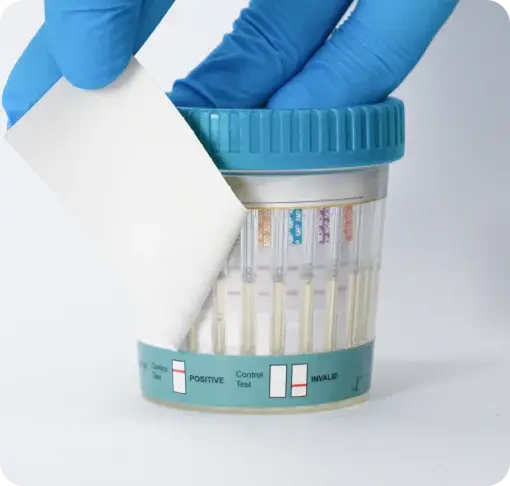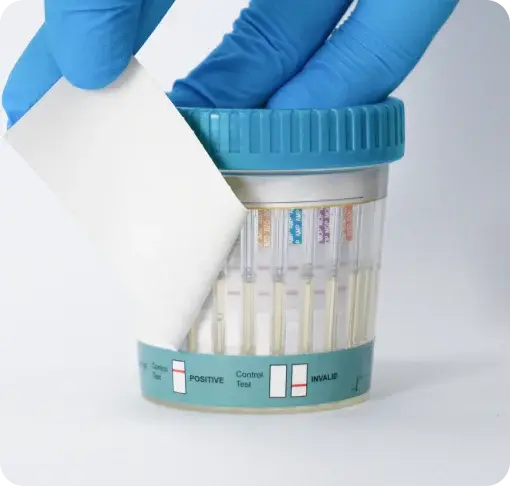Using Rapid and Point-of-Care Tests for Effective Healthcare
Prisons represent a unique environment where healthcare needs are both critical and complex. The close quarters, high-risk population, and often limited resources make it essential to have efficient and effective healthcare solutions in place. Some of the most crucial tools in this setting are the use of rapid BBV and point-of-care (POC) tests. These tests allow for immediate diagnosis and treatment, which is vital in managing the health of incarcerated individuals and preventing the spread of infectious diseases.
A well-rounded portfolio of rapid and POC tests can significantly enhance the healthcare capabilities of prisons, ensuring that the health needs of this vulnerable population are met swiftly and effectively. Below, we explore what constitutes the perfect portfolio of these tests for prisons and those in the criminal justice system.
1. HIV Rapid Testing
Importance: The prevalence of HIV in prisons is higher than in the general population, often due to risk factors such as intravenous drug use and unprotected sex. Early detection of HIV is critical for managing the virus and reducing transmission.
Ideal Test: A rapid HIV test that can detect both HIV antibodies and the p24 antigen is ideal. This type of test offers results within 20-30 minutes, allowing for immediate counselling and linkage to antiretroviral therapy if the result is positive.
Implementation: This test should be administered upon entry into the prison and periodically throughout incarceration, especially for those engaging in high-risk behaviours.
2. Hepatitis C (HCV) Rapid Testing
Importance: Hepatitis C is another prevalent condition in prison populations, primarily due to the shared use of needles among drug users. Early detection and treatment can prevent severe liver disease and reduce the spread of the virus.
Ideal Test: A rapid HCV antibody test that can deliver results in less than 30 minutes is essential. While a positive result indicates past or present infection, follow-up with a nucleic acid test (NAT) to confirm active infection is crucial.
Implementation: HCV rapid testing should be part of the intake process for all new inmates, with periodic re-testing for those at ongoing risk.
3. Hepatitis B (HBV) Rapid Testing
Importance: Hepatitis B is a potentially life-threatening liver infection. It’s particularly important to identify HBV in prisons because of the high transmission risk in such settings.
Ideal Test: A rapid test for Hepatitis B surface antigen (HBsAg) can identify active infections quickly. Additionally, tests that detect antibodies against the virus can be used to assess immunity (e.g., from vaccination) or past exposure.
Implementation: Testing should be standard upon entry, and vaccination should be offered to those who are susceptible to the virus.
4. COVID-19 Rapid Testing
Importance: The COVID-19 pandemic highlighted the vulnerability of prison populations to respiratory viruses. Rapid identification and isolation of cases are essential to prevent large outbreaks.
Ideal Test: Rapid antigen tests for COVID-19 that deliver results within 15-20 minutes are ideal for screening symptomatic individuals or those exposed to the virus. These tests are quick, easy to administer, and can help control the spread of the virus within the prison.
Implementation: COVID-19 tests should be administered to anyone showing symptoms, as well as during outbreaks or when new inmates are admitted during periods of high community transmission.
5. Substance Use Screening
Importance: Substance use is a significant issue in prisons, contributing to health problems and risky behaviours. Rapid drug tests can identify individuals under the influence or help monitor those in treatment for addiction.
Ideal Test: Rapid urine or oral fluid drug tests that screen for a wide range of substances, including opioids, cocaine, and methamphetamines, are essential. These tests should deliver results quickly to facilitate immediate intervention.
Implementation: Substance use screening should be routine upon entry and conducted randomly or when substance use is suspected during incarceration.
Building the Perfect Testing Portfolio
The perfect portfolio of rapid and point-of-care tests for prisons is one that addresses the most pressing health concerns in this setting, allowing for immediate diagnosis and timely intervention. Such a portfolio not only improves the health outcomes of incarcerated individuals but also plays a crucial role in controlling the spread of infectious diseases within the prison and the broader community.
By implementing a comprehensive range of tests, prison healthcare providers can ensure that they are well-equipped to manage the unique challenges of this environment. Regular training for healthcare staff, adequate resources for follow-up care, and a streamlined process for linking individuals to appropriate treatments are also critical components of a successful testing strategy in prisons. Ultimately, a well-rounded portfolio of rapid and POC tests is an investment in the health and well-being of the entire population, inside and outside the prison walls.
Explore BBV Tests

